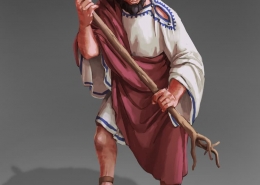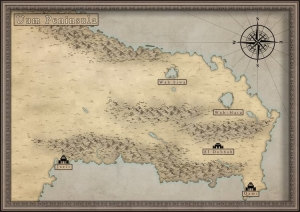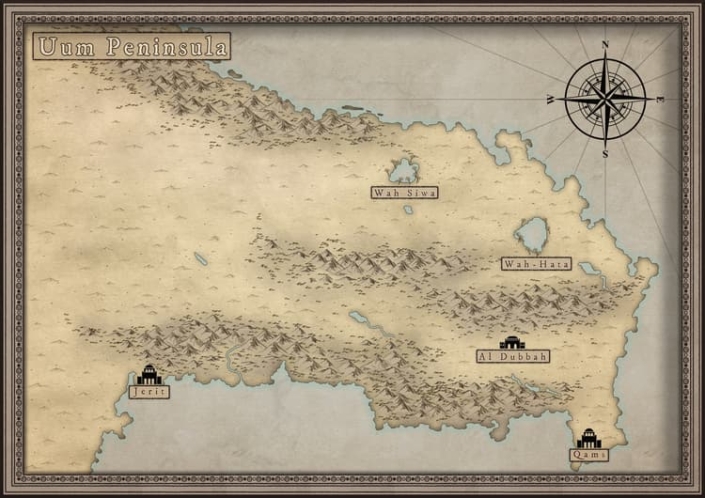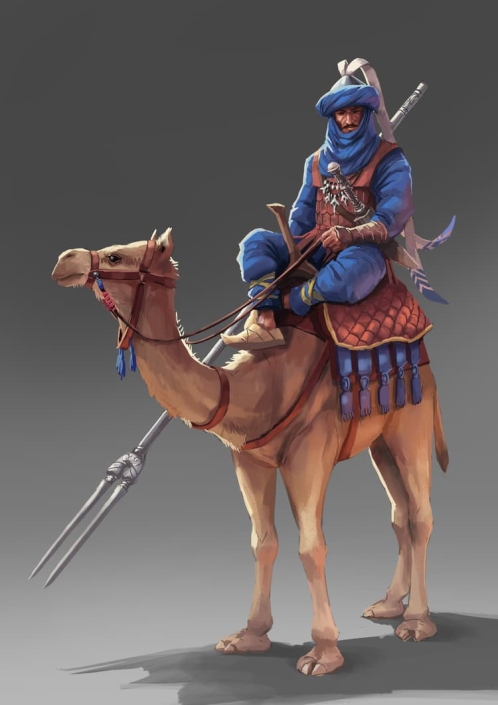Uum peninsula
The Uum peninsula is an extensive, arid, area to the south-east of the Xantian Isthmus. The area is known as a dry, desert-like region.
The region now belongs to the Empire of Jagrad and is now controlled as the most southern province of this empire. The satrap of the Uum Peninsula province resides in the city of Bamasa.
History
The history of the Uum Peninsula begins with the founding of the town of Jerit in the south-west of the peninsula by Olo, a grandson of the mountain god Orgon in the times which came to know as the times of gods. Olo founded the city after the discovery of huge swaths of masamite stones in the mountains of Bunan. The masamite stones contain various magical properties, which made the stones highly sought after in the south-eastern region around Jerit. Jerit became a blooming city with many traders and travelers from Ebedos coming to the city.
But the rare masamite stones not only attracted benevolent merchants, the wealth of Jerit became known throughout the ancient world and various factions in Ebedos wanted to obtain the riches of Jerit for themselves. So it was that the mighty goblin leader Mezangzzi rallied a large army to conquer the city of Jerit, and subsequently the masamite filled mines of Bunan. After the conquest, the city of Jerit saw many years of decline, until Jerit was no more than a small city. It was a torment in the eyes of the great god Orgon, who saw Jerit as his city, but it was the destruction of the temple of Olo that was the last straw. Orgon send down a plague down on the city, and in one night, all goblin children fell death to the ground. The remaing goblins wept throughout the next following seven days. It was on the seventh day that they stormed to the palace of Mezangzzi and gruesomely murdered him and his family. The goblins from Jerit brought the body of Mezangzzi to the remainings of Olo’s temple to settle the debt with Orgon. Orgon accepted the gift, with the only condition, that the people who lived in Jerit before the coming of Mezangzzi’s army could return to their homes in the city.
Since the rise of Medrya, the Uum Peninsula saw some turbulent times. A time of great decay of the cities on the southern edge of the region. Only the city of Jerit, again, grew to power with the income of the masamite stones flowing in from the north. It was also the time which came to know as the Dawn of the Tribes, a time filled with wars between the tribes of the northern half of the Uum Peninsula, with the absolute crown jewel being the Oase of Wah Hata. It was eventually the great warlord Rashman who finished the dawn of the tribes and came out victorious as the one ruler of the oases. But his conquering was far from over. He set his sight to the south – to the rich cities of the southern coast of Uum – to conquer their wealth and make them fealthy to him.
Since the rise of Medrya in the north, the Uum Peninsula experienced turbulent times marked by the decline of alliances between cities along its southern edge. Among these, only the cities of Jerit and Bamasa thrived, Jerit bolstered by the wealth generated from the masamite stones sourced from the north and Bamasa because of the fine goods it could export to the south. This period, known as the Dawn of the Tribes, was characterized by intense warfare among the tribes in the northern half of the Uum Peninsula. The most coveted prize during this era was the Oasis of Wah Hata.
The tumultuous period of tribal conflicts came to an end under the leadership of the formidable warlord Rashman. Emerging victorious, Rashman unified the oases and established himself as the sole ruler. His ambitions, however, extended beyond the northern territories. With an eye on the prosperous cities along the southern coast of Uum now standing alone, Rashman embarked on a campaign to conquer these cities and bring them under his dominion, seeking to harness their wealth and secure their allegiance.
In the year 203, Al’nur, the chieftain of the Wahada Tribe, captured the city of Bamasa in the southeastern corner of the Uum Peninsula. This victory allowed Al’nur to bring the eastern part of the Uum Peninsula under his control, with his forces, famed for their prowess as camel riders, flying his banner. However, Al’nur foresaw a looming threat from the north: the expanding Empire of Jagrad. Realizing that direct confrontation with Jagrad’s formidable armies would be futile, Al’nur chose a strategic alliance instead.
To solidify this alliance, Al’nur arranged a marriage between his sister, Sahra “The Believer”, and the satrap of Armurad, who was the brother of the Jagrad king. Additionally, he sent his most esteemed warrior, Qadira “The Camel Rider”, to serve as the personal bodyguard to the king of Jagrad. This shrewd move allowed Al’nur to join the empire on favorable terms, ensuring the survival and integration of his tribe within the growing dominion of Jagrad.
Follow our newsletter
Related items

Aeson II of Eros

Kintas “The Fixer”
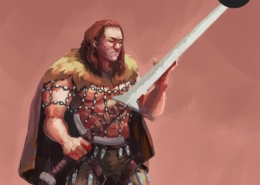
Belisar “The Great”
